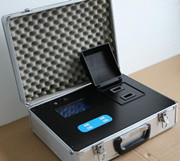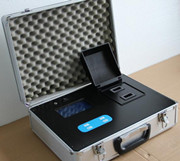1, the laboratory environment
In the laboratory for ammonia nitrogen analysis, there should be no dust or ammonium salts in the room. Do not carry out the analysis with nitrate nitrogen, etc., because ammonia must be used in the nitrate nitrogen test, and the ammonia is highly volatile. The Ness reagent absorbs ammonia in the air and the test result is high. The reagents such as reagent glassware used should be stored separately to avoid cross-contamination and affect the blank value.
2. Preparation of ammonia-free water
The requirements of water in the experimental process are very high. Ordinary distilled water often does not meet the experimental requirements, and secondary processing is required to obtain ammonia-free water. Based on actual work experience. When the ammonia-free water is prepared by distillation, the former part of the distillate and the latter part of the distillate should be discarded, and only the middle part of the distillate is stored in a sealed glass bottle. The blank value of the ammonia-free water thus obtained is low, but the secondary processing to obtain the ammonia-free water is time-consuming and laborious, and is not economical. Fresh deionized water was prepared by using a composite resin exchange column instead of ammonia-free water for the determination of ammonia nitrogen. The blank absorbance can meet the experimental requirements.
3. Control of reaction conditions
3.1 reaction temperature
Temperature affects the rate at which the Nessler reagent reacts with ammonia nitrogen and significantly affects the color of the solution. When the reaction temperature is 25 ° C, the color reaction is complete; the absorbance does not change significantly at 5 ° C ~ 15 ° C, but the color is not complete; when the temperature is 30 ° C, the solution fades, the absorbance is significantly lower. Therefore, the experimental temperature should be controlled at 20 ° C ~ 25 ° C, which can ensure the reliability of the analysis results.
3.2 Reaction time
The reaction time is before l0min, the color development of the solution is incomplete; the color is stable from 10min to 30min; the color has a deepening trend from 30min to 45min; the color decreases after 45min. Therefore, the color development time should be controlled at 10 minutes to 30 minutes to perform colorimetric analysis at a speed as soon as possible.
3.3 Reaction system pH
When analyzing the sample, the pH of the sample has a significant effect on the determination of ammonia nitrogen. The pH is too low and the color development is incomplete. When the pH is too high, the solution may appear turbid. When the pH is 13, the color development is complete and there is no turbidity. The pH of the solution is preferably selected to be l3.
4, other
4.1 For the determination of ammonia and nitrogen in clean surface water and groundwater, the water sample needs to be pretreated by flocculation and sedimentation, and the filter paper used for filtration generally contains soluble ammonia nitrogen, especially quantitative filter paper. In practice, it is better to use soluble ammonia nitrogen. Low-density filter paper or ultra-fine glass fiber membrane filtration. Before filtration, apply a small amount of ammonia-free water to wash the soluble ammonia nitrogen several times to reduce the measurement error and improve the accuracy and sensitivity of the method.
4.2 Ammonia nitrogen sample preparation:
Does the ammonia nitrogen sample need to be pretreated? It depends mainly on the degree of contamination of the water sample being tested. Organic compounds such as fatty amines, aromatic amines, aldehydes, acetone, alcohols and organic chloramines, as well as inorganic ions such as iron, manganese, magnesium and sulfur, cause interference due to the occurrence of discoloration or turbidity, and the color and turbidity in water also affect Colorimetric. For this purpose, flocculation precipitation filtration or distillation pretreatment, volatile reducing interference substances, can also be heated to remove under acidic conditions. Interference with metal ions can be eliminated by adding an appropriate amount of masking agent.
4.3 When the measurement range is too large, increase the buffer to expand the measurement range.
5, summary
Attention should be paid to the determination of ammonia nitrogen by Nessler's reagent photometric method: 1 First, you must purchase qualified reagents. 2 The correct preparation of the reagent determines the sensitivity of the method, especially the preparation method of the Nessler reagent. 3 Check the test water, reagent blank, filter paper, and reduce the blank value to improve the precision of the experiment. 4 to control the reaction temperature, time, system pH, etc. under optimal conditions. 5 When analyzing a large number of samples, the method of color development and dilution measurement can be directly used, and the results can meet the analysis requirements.


With the development of science and technology, people's life quality has increased, and people have paid more attention to physical health. Therefore, the concept of modernized intelligent office work is gradually gaining popularity.The core products of uplift are various electric standing desks, hand crank standing desks and pneumatic standing desks, which meet the different choices of customers. Standing desks are widely used in offices, at home, schools, hospitals and other occasions. It can be used by adults and children. Uplift team understands that ergonomics and a comfortable working environment will help us work healthier and enjoy a happier life, so we are proud that this is a meaningful green career.

Standing Desk Frame,Height Adjustable Desk,Adjustable Height Desk,Electric Adjustable Height Desk
Suzhou Uplift Intelligent Technology Co., Ltd , https://www.upliftec.com